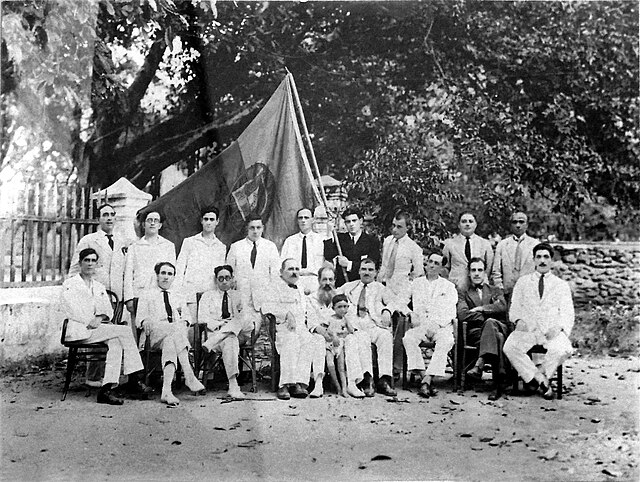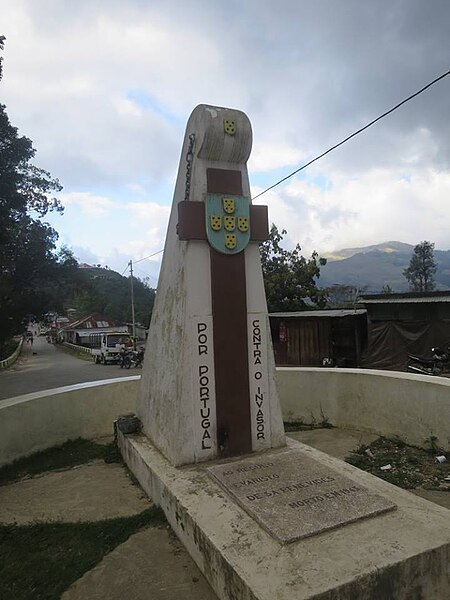The Battle of Timor occurred in Portuguese Timor and Dutch Timor during the Second World War. Japanese forces invaded the island on 19 February 1942 and were resisted by a small, under-equipped force of Allied military personnel—known as Sparrow Force—predominantly from Australia, United Kingdom, and the Dutch East Indies. Following a brief but stout resistance, the Japanese succeeded in forcing the surrender of the bulk of the Allied force after three days of fighting, although several hundred Australian commandos continued to wage an unconventional raiding campaign. They were resupplied by aircraft and vessels, based mostly in Darwin, Australia, about 650 km (400 mi) to the southeast, across the Timor Sea. During the subsequent fighting, the Japanese suffered heavy casualties, but they were eventually able to contain the Australians.

An Australian commando, possibly Sergeant Bill Tomasetti of the 2/2nd Independent Company, in typical mountain terrain on Timor, on 12 December 1942. (Photograph by Damien Parer.)
Destroyed Chinese school in Aileu, Portuguese Timor
The East Timorese village of Mindelo (Turiscai) is burnt to the ground by Australian guerillas to prevent its use as a Japanese base, 12 December 1942
Signaller Keith Richards, Corporal John Donovan and Sergeant Frank Press (left to right), from the Australian 2/2nd Independent Company, using a radio on a mountain top in Japanese-occupied Timor, in about November 1942. (Photograph by Damien Parer.)
Portuguese Timor was a colonial possession of Portugal that existed between 1702 and 1975. During most of this period, Portugal shared the island of Timor with the Dutch East Indies.
Portuguese Governor José Joaquim Lopes de Lima [de], who without authorisation agreed on new borders with Dutch authorities.
Group of political deportees in Timor, 1932.
Memorial to chief Evaristo de Sá Benevides.
Portuguese ceremony in Atabae (1970)





![Portuguese Governor José Joaquim Lopes de Lima [de], who without authorisation agreed on new borders with Dutch authorities.](https://upload.wikimedia.org/wikipedia/commons/thumb/3/37/Jos%C3%A9_Joaquim_Lopes_de_Lima.jpg/454px-Jos%C3%A9_Joaquim_Lopes_de_Lima.jpg)


